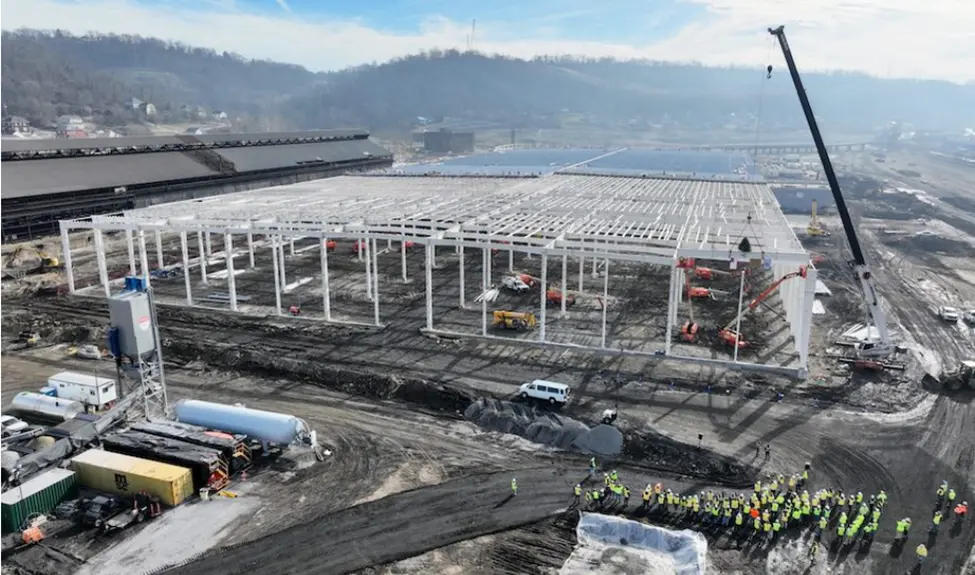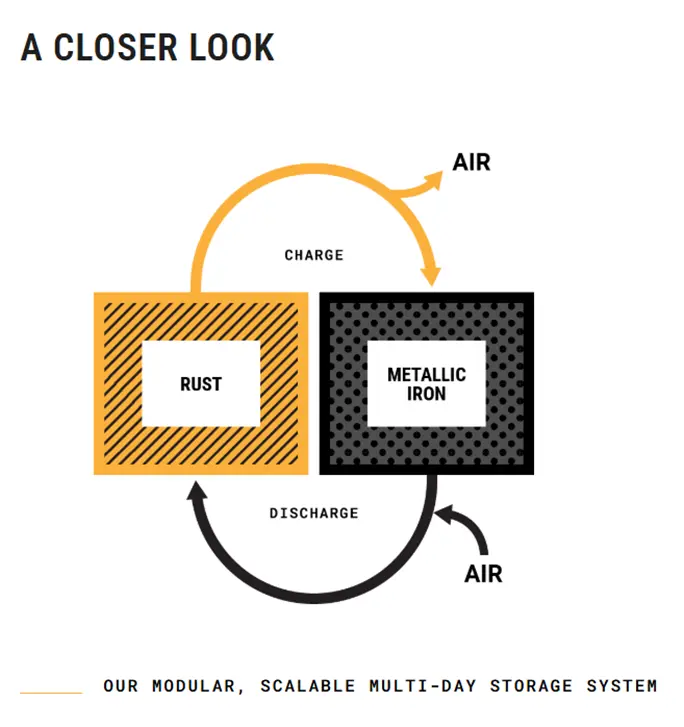In the fall of 2021, The Wall Street Journal wrote a piece on Form Energy, a renewables technology company who claimed they’d made a “breakthrough in long-duration batteries” that were poised to go head to head with lithium-ion (LIB) storage for renewable energy grid projects. Their investors, including a who’s-who of technology innovators like Bill Gates and Jeff Bezos, are banking on Form’s ability to build, “the kind of battery you need to fully retire thermal assets like coal and natural gas power plants.” That’s how Form’s CEO, former Tesla Powerball developer, Mateo Jaramillo describes their new Iron Air batteries.

Four years later, we’re about to find out if Form’s Iron Air technology lives up to the hype because their West Virginal production facility is producing their “grid-scale” storage solution in anticipation of their first U.S. battery storage system. Their investors now include GE Verona, MIT’s Engine Ventures, and Energy Impact Partners, according to reporting in Engineering News-Record. The initial installation will be in a converted paper & pulp mill in Lincoln, Maine. At 8,500MW, it is expected to be “the largest battery project by energy storage capacity in the world,” according to a Form spokesperson.
Minnesota’s Great River Energy is constructing a 1.5MW Form Energy system project that is expected to go online at the end of 2025, and three more Form storage systems, two 10MW projects for Excel Energy and a 15MW facility for Georgia Power are projected for 2025 and 2026 online dates.
-----------------------------------------------------------------------------------------------------------------------------------------------------------------
GPRS’ work supports green power and renewable energy projects throughout the United States. Learn more about our work in the wind, solar, geothermal, and hydrothermal energy sectors, here.
-----------------------------------------------------------------------------------------------------------------------------------------------------------------
What is an Iron Air Battery?
Before delving into how Iron Air battery technology works, it’s worthwhile to remember, first, how LIB technology works, since it is the current king of the renewable energy hill.
A Refresher on Lithium-Ion Battery Technology
Lithium-ion batteries store and release energy by shuttling lithium ions between two electrodes – anode and cathode – through an electrolyte. Their high energy density, efficiency, and perceived long cycle life make them the most popular option for storing energy. This is the same technology that is used in EVs, cell phones, and a plethora of chargeable electronic devices.
LIB technology has proven scalable, and at the grid scale, has been a successful storage solution for intermittent renewable energy, making it the storage system of choice for renewables like solar and wind energy.
However, that high energy density does come with risk, especially at scale. Thermal runaway is the term used to describe the chain-reaction-like combustion that occurs on the rare occasion that a lithium-ion array catches fire. Thermal runaway is considered so dangerous, due to both its toxicity and extreme temperatures, that the International Association of Fire Chiefs “strongly advises” that no firefighter enter an LIB facility fire location.
Iron Air Battery Technology Explained
At its simplest, Iron Air technology operates on a concept Form Energy calls “reversible rusting.”
The cycle is deceptively simple:
• When the Iron Air battery is discharging its energy, the battery “breathes in” oxygen and converts its iron metal (stored inside the battery in pellets the size of musket balls) to rust
• When the battery is charging, the electrical current applied while it’s storing up energy converts the iron rust back into iron as the battery “exhales” oxygen

Photo Credit: Form Energy
"When a building rusts or a bridge rusts, it is very slowly discharging [energy]," Jaramillo explained. Form's batteries can reverse the rusting process with the addition of electric current, turning rust back to iron and releasing oxygen. When the energy is needed, the battery takes in oxygen, rusting the iron and releasing some energy.
"What we have done is build a device that takes that reaction and harnesses it and lets us manufacture that battery and deploy it in very large volumes," Jaramillo told Newsweek in late 2024.
While critics may decry Iron Air’s size – about the size of a standard washer/dryer set in the U.S., containing stacks of about 30, meter-tall cells while lithium-ion technology can be much smaller – no one is trying to put Iron Air into cars or smartphones. These are giant batteries, designed to store and discharge large quantities of energy at grid scale.
Plus, Iron Air batteries are reportedly significantly less expensive to produce and operate. With an average cost of just $6 per KW, this emerging technology offers a significant increase in storage duration, and the base conductive material, iron, is “abundant, nontoxic, and nonflammable,” unlike the chain-reaction thermal runaway combustion of an LIB.
For those in the renewable energy industry, Iron Air battery storage systems could prove to be the missing link in the expansion and modernization of the U.S. power grid. Whether they live up to being a tool that helps move power generation and transmission away from fossil fuels remains to be seen.
GPRS Intelligently Visualizes The Built World® for customers in the power, renewables, and oil and gas industries.
What can we help you visualize?
Frequently Asked Questions
Is GPRS able to support projects on a national scale?
The short answer is YES! GPRS has a nationwide army of highly trained, SIM-certified Project managers that spans the entire U.S., including Alaska, Hawaii, and even Puerto Rico. We are regularly called on to provide support for large projects in the energy sector, retail, environmental, healthcare, education, infrastructure, and a wide variety of industries associated with architecture, engineering, and construction.
Learn more about GPRS’ nationwide footprint, here.
How does GPRS deliver its data on large regional, or national projects?
Whether your job is a single utility locate or a thousand miles of lines, GPRS takes great care to deliver the same standardized, high level of service and deliverables to every customer. That’s why we developed SiteMap® (patent pending), our industry-leading, interactive software platform. Every GPRS customer receives complimentary SiteMap® Personal access, and we have the capability to build customized SiteMap® solutions that cover the scope of a single construction site, all the way up to a national facilities portfolio. To learn more about what SiteMap® can do for your project, click here.
